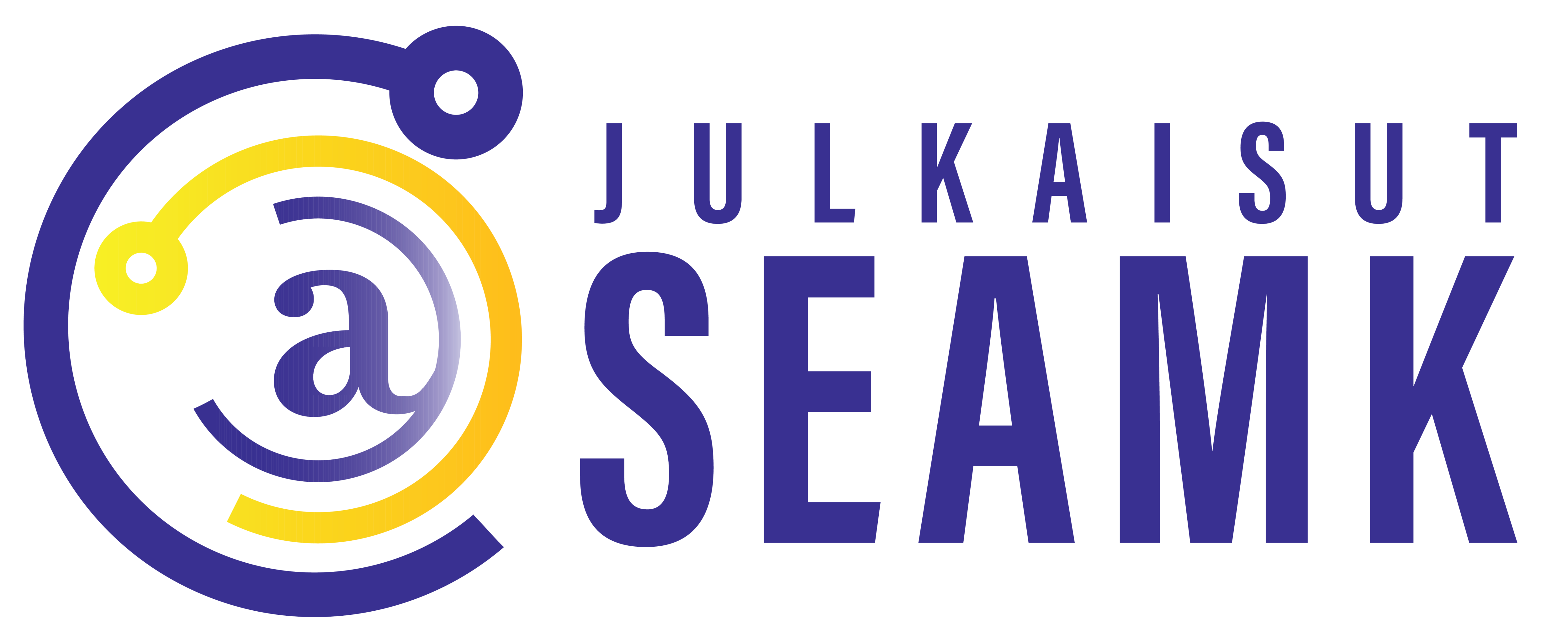Well-being at work from nature! – seminar
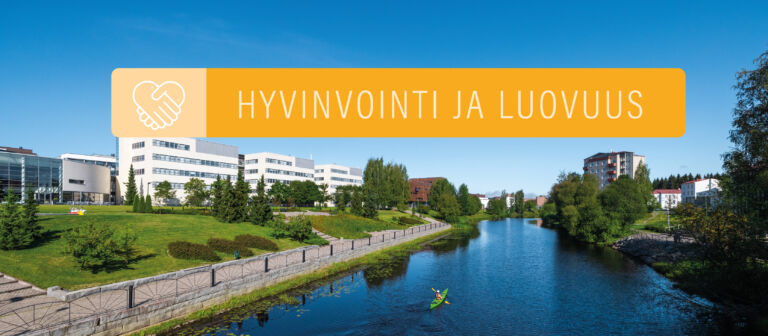
A seminar and workshop jointly carried out by the Well-being from nature (Hyvinvointia Luonnosta) and TATTI – Teknologian Avulla Työ Tuottavaksi projects and held at Frami premises on 14 December attracted more than 40 people. The seminar was entitled Work well-being from nature! to suit the content and objectives of both projects. In connection with the seminar, local companies producing well-being services and nature tourism had a chance to presented themselves.
Anna Rauha, project manager for the Wellbeing from Nature project, presented the objectives, events and implementation of the project. The project is an international Leader-funded project. Project partners come from Malta (Gozo Action Group Foundation; GAGF) and Ireland (Inishowen Development Partnership; IDP) SeAMK being the leader partner in the project. In addition to SeAMK, The Finnish Forest Centre (Metsäkeskus) is also involved in the project from Finland.
The target group of the project is entrepreneurs interested in welfare tourism and the provision of Green Care services. The aim of the project is to exchange information and activities related to the organisation of well-being and nature tourism, to activate interested entrepreneurs and to improve the capacity of entrepreneurs to receive international visitors.
Study visits have been carried out in all participating countries. During Finland’s visit in September, the Maltese and Irish visitors were particularly fond of the Finnish forest, where some of them also had the opportunity to spend the night. Guests considered the forest an important opportunity in experience tourism. The project is already in its final stages and will end at the end of March.
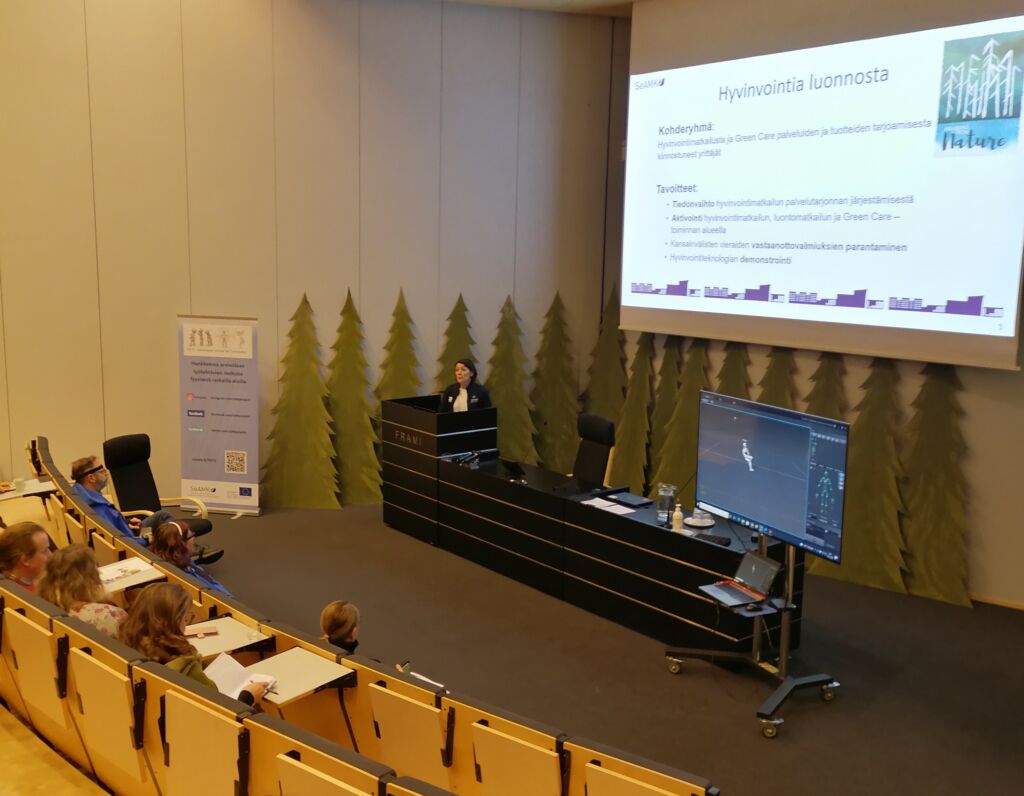
Marja-Liisa Pienimäki, the entrepreneur of Sepänniemi Holiday Village, spoke about her own experiences with the project and was very pleased with the new ideas and insights she had from the study visits to Ireland and Malta.
Project Manager Kirsi Paavola reported on the progress, objectives, and actions of the ESF-funded Tatti project in the participating companies. The aim of the project is to improve occupational well-being and safety in companies where physically burdensome tasks are carrying out. The aim is also to increase company information on workload and, in the long term, to reduce sick absenteeism and increase productivity. So far, ergonomic measurements have been carried out in four metal and four construction companies. The last group of companies will be companies in the health care sector.
The laboratory engineer Tapio Hellman demonstrated the Noitom Perception Neuron Studio’s motion capture system and sensors used in the Tatti project. The system creates animations of the measured performance of ergonomic measurements.
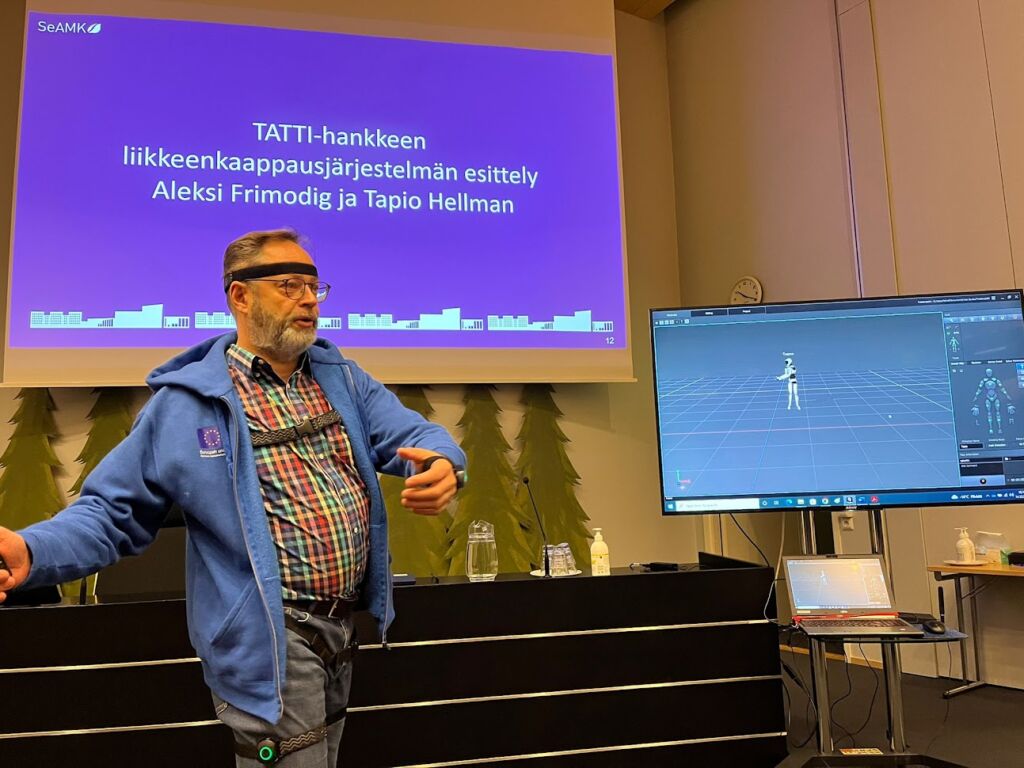
Physiotherapy lecturer Pia Haapala presented the measurement and analysis methods used in the project in more detail. OWAS and RULA ergonomic analysis methods have been used to assess and detect the physical load of adverse work positions. In this analysis, harmful working positions and combinations of them are classified by numbers and colours.
The transactions are stored in a motion capture system through which they are transferred to a program that forms the body’s movements and angles of movement based on the numbers of the classification. These will provide objective information on working positions and facilitate the assessment of physical loads at different stages of work.

An illustration of the OWAS and RULA Ergonomics Analysis
The different coloured frames on the animation character describe the harmful phases of the work. The colour of the frame varies from green to red depending on the loading position. This visual information obtained through animation has been very illustrative. Companies have been awakened by the potential burden factors of work and have been able to generate common reflection on workplace positions and possible changes to workplaces such as job breaks, job rotations, various aids, breaks and countermoves, etc. When measurements give objective results mirroring the reference values, they are not just dependent on subjective feelings or visual observations. The results of the measurements will help to justify any necessary change in the employee’s own activities in terms of health and maintaining the ability to work.
Verifying the welfare effects of nature
Merja Hoffrén-Mikkola, Senior Lecturer, presented interesting information on the welfare effects of forests, for example. Travelling in the forest or even in the city parks is seen directly as a decrease in heart rate and an increase in heart rate interval, indicating physiological recovery. A mere viewing of natural landscapes also calms the person, so that the parasympathetic nervous system is activated and the body calms down. Nature-related images should be used in our working environments and, for example, in care homes for elderly, where it is usually difficult, if not impossible, to go to the nature.
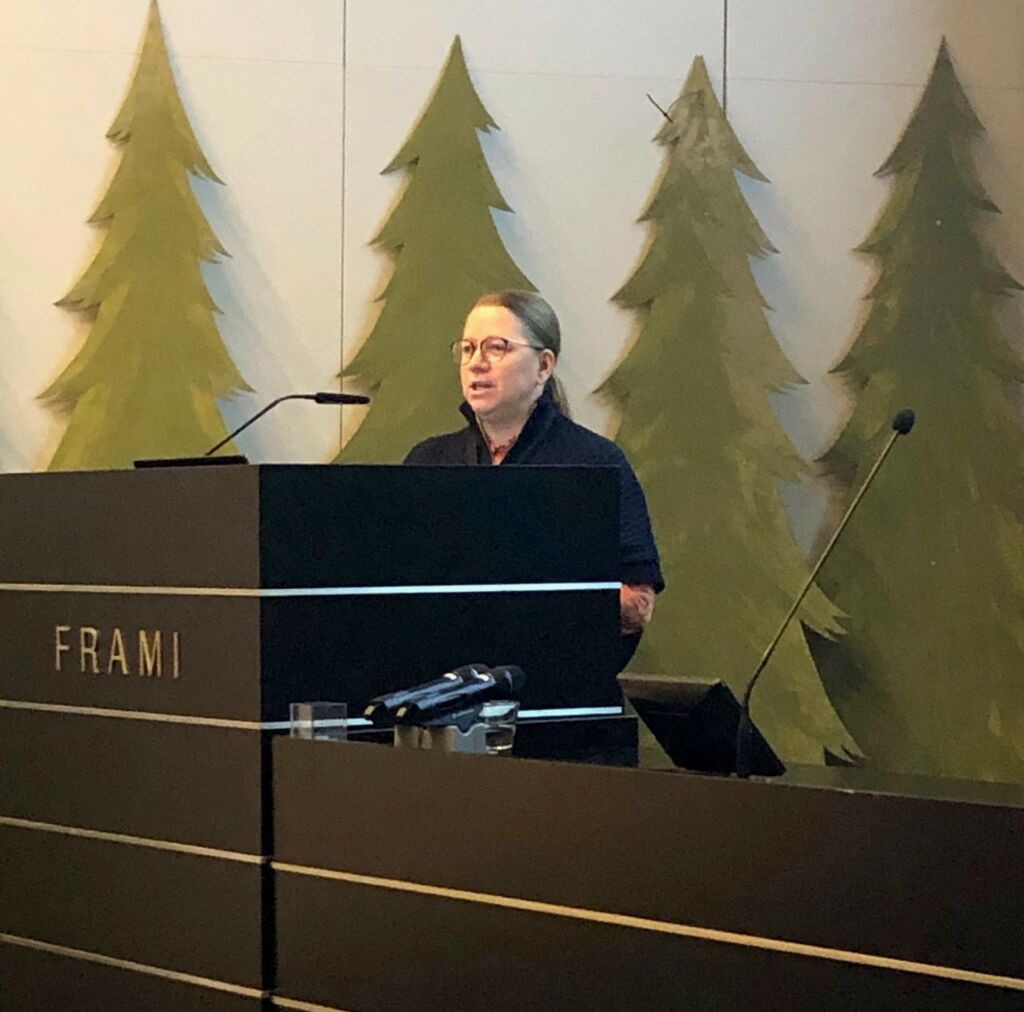
Many variables can be measured for welfare effects, e.g., physical activity, heart rate, recovery from stress and quality of sleep. There are also many different instruments for measuring such as various applications, clothing devices and sensors, watches, and rings. However, measurement in itself is not essential; The most important thing is the reflection on measurement results. If the results of the measurements are not analysed, the benefits of the results and conclusions will also be missed. The greatest benefit of physiological measurements is to attract interest and assess well-being and its level.
The Thesis of Peltsi
Mikko Peltsi Peltola’s performance aroused many thoughts about various kinds of physical activity, outdoor activities, and exercise activities in general. The performance was a real gospel of getting out and about in nature with great pictures and videos.
It would be important for everyone to have a hobby or a passion that they enjoy doing and want to spend time doing. Through this hobby or passion, it is possible to lead a better life and achieve a better quality of life. A hobby is like an instruction to put an oxygen mask on yourself first so you can help others. Taking care of one’s own wellbeing helps one to cope both in work and in everyday life.
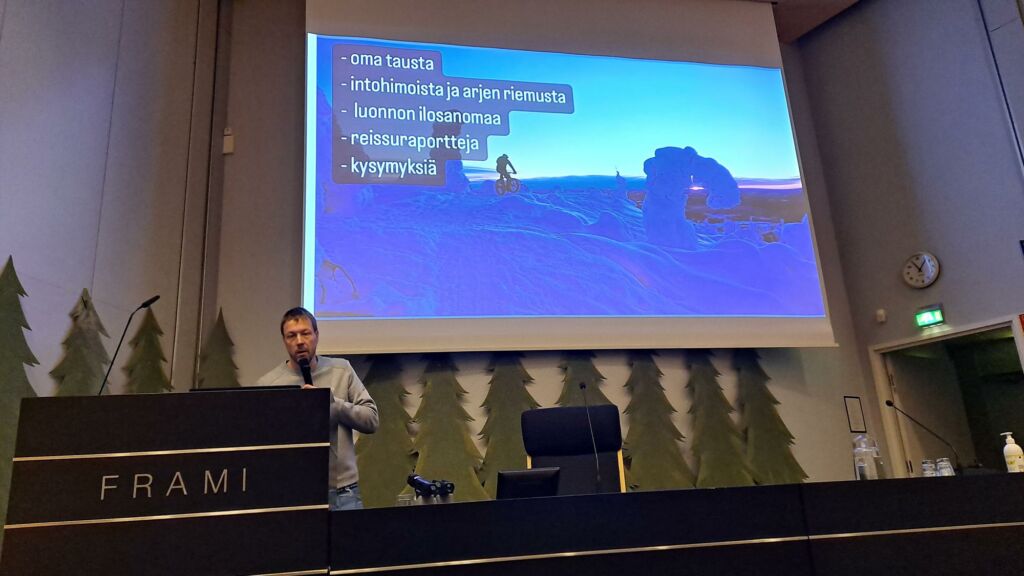
The importance of time management in everyday life
It is important to allocate time to different activities during the day. People of working age take about eight hours at work, and another eight hours should be reserved for sleep and recovery. But the question is, how we spend the remaining eight hours of our day?
There are many choices we can make. We can lie on the sofa with our cell phones or wait in the car for our children to stop their hobbies and at the same time post something nice to social media, or perhaps go for a run during children’s hobbies. Or we can take some time for ourselves and go to the gym or the theatre? What we do in our leisure time with our children serves as an example to them of adult activity. Moving in a variety of ways, with different heartbeats and in different environments makes our minds and bodies recover both mentally and physically. And the more diverse the opportunities offered to children when they are small, the better and more diverse will their motor skills develop as they grow up.
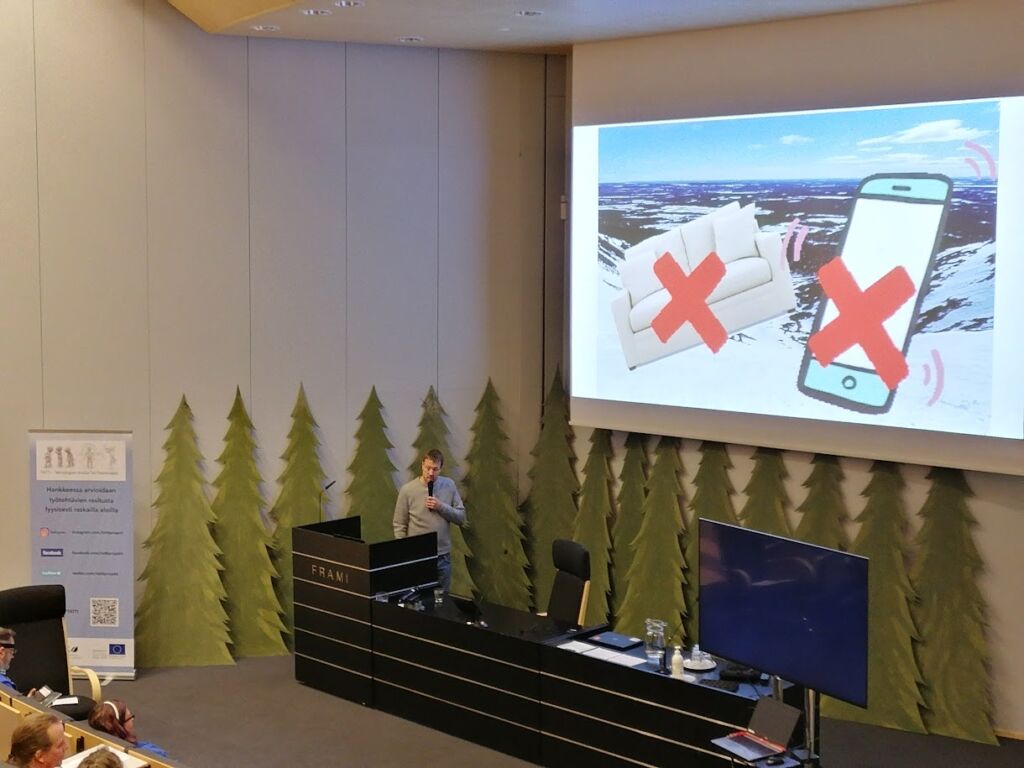
Mikko also talked about his many excursions and challenges in different places and under different conditions in Finnish nature. These stories were seasoned with great photographs.
The Ideas of the Idea Tree
A workshop was also held where ideas were collected from the perspective of both entrepreneurs and consumers as to what kind of service or other provision would attract people to go to nature. The idea of several participants in the workshop was to combine culture and nature in one way or another. Possible activities in nature could include a concert in the forest, a story walk in nature or a quieting tour in the bosom of nature, in contrast to busy and alarming working life. The Wellbeing from Nature project will make the outcomes and ideas of workshops and international study visits into a joint compilation and publication.

The seminar received good feedback from the participants. The atmosphere was relaxed and freed. It was also greta that Peltsi had plenty of time to answer the many questions of the participants at the end of the event. The spruce forest on the wall of the seminary created a soothing feeling of nature.
Kirsi Paavola, Pia Haapala ja Anna Rauha
SeAMK
